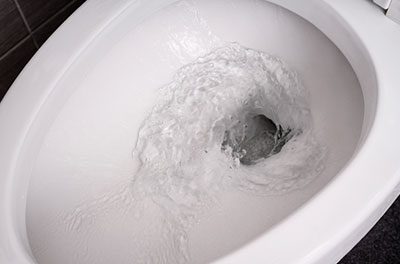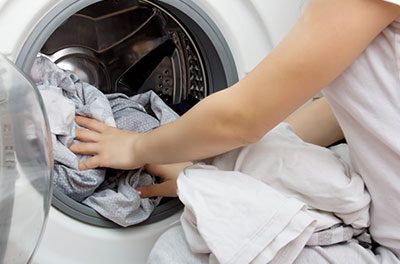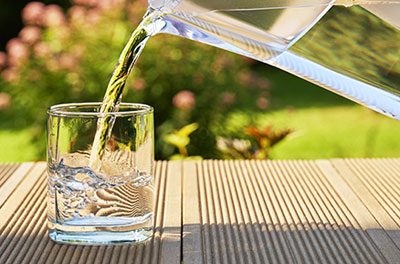Conservation
OUR WATER
We have a limited amount of water on earth even though approximately 71 percent of the earth’s surface is covered with water. However, 97 percent is salt water in the oceans and otherwise undrinkable. 2 percent of the water is frozen in the polar ice caps. That means, only 1 percent or a small fraction, is fresh water we can use for drinking, growing and cleaning our food, bathing, carrying away waste along with other human activities.
%
salt water
%
frozen water
%
fresh water
That demand for water in our daily lives makes it important for us not to waste it. We can all do our part by practicing the following water conservation tips (or learn more by clicking here):
Inside the House

Check every faucet in the house for leaks, since a single dripping faucet can waste far more water in a single day than 1 person needs for drinking in an entire week.

Leaks inside a toilet can waste up to 200 gallons of water a day. Call the office for leak detection tablets to check if you have a leak inside your toilet. You can also put some food coloring into the toilet tank. If the color trickles into the bowl, there is a leak and repairs should be made ASAP.

Install low flow plumbing fixtures such as showerheads and faucets. Install water saving plumbing appliances such as a front-loading washing machine which utilizes less water and also less energy.

Use proper washer level or load size selection on clothes washers. Use automatic dishwasher and washing machines only for full loads.

Turn off the faucet when you brush your teeth. Half fill a glass and use that water to wet your brush and rinse your mouth. When shaving, use a sink filled with water to rinse your shaver. Do not let the faucet flow. Take short showers instead of baths.

Keep a bottle of drinking water in the refrigerator instead of running the faucet until the water is cold enough to drink. Use a small pan of water to wash, peel or clean vegetables and fruits rather than letting the water run.
Outside the House

Set sprinklers to water the lawn or garden only. Do not water the street or sidewalk. Use a broom to clean off your driveways, steps or sidewalks instead of a hose.

Water in the early morning instead of mid-day so that less water evaporates. Use soaker hoses and irrigation systems to reduce the amount of water used.

Wash automobiles with soap, water and a bucket. Use a hose with an automatic shut off nozzle to wet down vehicle and for final rinse.
We have a limited amount of water on earth even though approximately 71 percent of the earth’s surface is covered with water. However, 97 percent is salt water in the oceans and otherwise undrinkable. 2 percent of the water is frozen in the polar ice caps. That means, only 1 percent or a small fraction, is fresh water we can use for drinking, growing and cleaning our food, bathing, carrying away waste along with other human activities.
That demand for water in our daily lives makes it important for us not to waste it. We can all do our part by practicing the following water conservation tips (or learn more by clicking here):
Inside the House

Check every faucet in the house for leaks, since a single dripping faucet can waste far more water in a single day than 1 person needs for drinking in an entire week.

Leaks inside a toilet can waste up to 200 gallons of water a day. Call the office for leak detection tablets to check if you have a leak inside your toilet. You can also put some food coloring into the toilet tank. If the color trickles into the bowl, there is a leak and repairs should be made ASAP.

Install low flow plumbing fixtures such as showerheads and faucets. Install water saving plumbing appliances such as a front-loading washing machine which utilizes less water and also less energy.

Use proper washer level or load size selection on clothes washers. Use automatic dishwasher and washing machines only for full loads.

Turn off the faucet when you brush your teeth. Half fill a glass and use that water to wet your brush and rinse your mouth. When shaving, use a sink filled with water to rinse your shaver. Do not let the faucet flow. Take short showers instead of baths.

Keep a bottle of drinking water in the refrigerator instead of running the faucet until the water is cold enough to drink. Use a small pan of water to wash, peel or clean vegetables and fruits rather than letting the water run.
Outside the House

Set sprinklers to water the lawn or garden only. Do not water the street or sidewalk. Use a broom to clean off your driveways, steps or sidewalks instead of a hose.

Water in the early morning instead of mid-day so that less water evaporates. Use soaker hoses and irrigation systems to reduce the amount of water used.

Wash automobiles with soap, water and a bucket. Use a hose with an automatic shut off nozzle to wet down vehicle and for final rinse.

Sitemap
Contact Info
Copyright © 2025 North Penn Water Authority • Site: BCG • Privacy Policy • Terms and Conditions


